Today I will be introducing you to Plutchik’s wheel of emotions, a diagram visualizing 8 basic emotions, which Robert Plutchik devised in 1980.
I will also present various of these diagrams showing the intensity and prevalence of emotions of various people:
- 3 neurotypicals
- 1 person who might “dip a toe on the [autistic] spectrum”
- 6 autistic people
- at least 1 person with PTSD, but possibly more
- 1 person with schizoid and ADHD features
- 1 person with ADHD
- 3 cluster B personalities
- 2 primary psychopaths
- 1 psychopath with narcissistic traits and schizotypy (possibly NPD/HPD)
One of these people is me, so if you do not know me or my particular neurology, perhaps you can find out who is who from the graphs alone.
Wheel of emotions
In the image below you can see Plutchik’s wheel of emotions, with each emotion being diametrically opposed to the other. Plutchik suggested eight primary bipolar emotions:
- Joy versus sadness;
- Anger versus fear;
- Trust versus disgust; and
- Surprise versus anticipation.

In the table below you can see the various gradations of emotions and their opposites.

Color wheel
Plutchik’s diagram takes inspiration from the color wheel; like colors, primary emotions can be expressed at different intensities and can mix with one another to form different emotions. I recently wrote a post on Quora about colors that don’t have the letter “e” in it, where I talked a bit about primary, secondary, and tertiary colors.
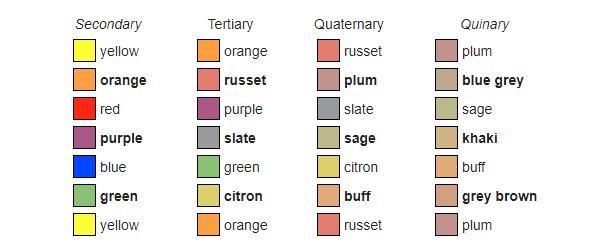
Just like colors, you can combine emotions to get different blends, which are both aspects of various feelings. For example, anxiety emerges from anticipation and fear. In the table below you can see the various combinations of emotions.
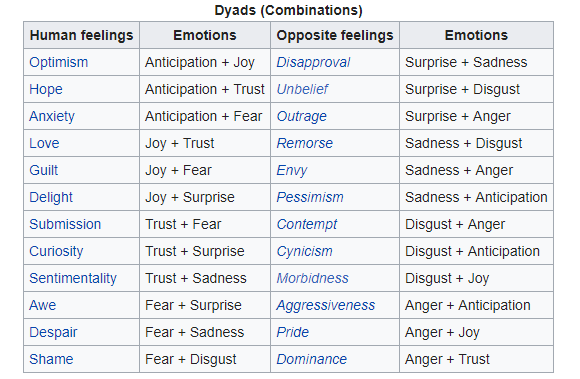
Asymmetrical diagram
There are various models of emotions, many of which that are based on Plutchik’s work. But rather than give an overview of the various models and their merit, I just want to use and discuss this diagram. There may be better ones, but this one is bound to reveal some things. Before I get into the diagrams of actual people, I want to show you an asymmetry I observed in Plutchik’s wheel of emotions. I am unsure whether this says anything about the model/diagram or human emotions, but either way, there seems to be an overrepresentation of negative emotions in the diagram. Emotions that are not explicitly positive or negative in my mind, but may be leaning heavier towards one end are colored with a lighter tone.

I don’t see this as a flaw in the diagram. Rather, in the upcoming diagrams, I am about to show you, if you want to know about the intensity and prevalence of people’s positive emotions, pay particular attention to the regions that are colored green in the diagram above. Conversely, if you are curious about the negative emotions, look for the regions marked purple.
Note however that not all these negative emotions are necessarily negative experiences. For example, distraction might have a negative effect on social and cognitive functioning, while not being experienced negatively by the person itself. After all, distractions can often lead to wonderful new experiences and/or insights. Also, submission is probably good in moderation, so perhaps the fact that I colored it purple says more about what I think of submission.
Context
While Plutchik’s diagram was merely to represent the emotions and their intensities, I repurposed his diagram to show the intensity and prevalence of emotions that people report having.
In the diagrams below, in each case, the intensity of emotions is presented on the left, and the prevalence of emotions on the right.
Archie D’Cruz’s emotions
First, let’s start with a definite non-autistic, which may serve as a frame of reference for some of the graphs of autistic people we will take a look at. It might be important to note that albeit Archie is likely neurotypical, I do not know how typical his graph actually is.
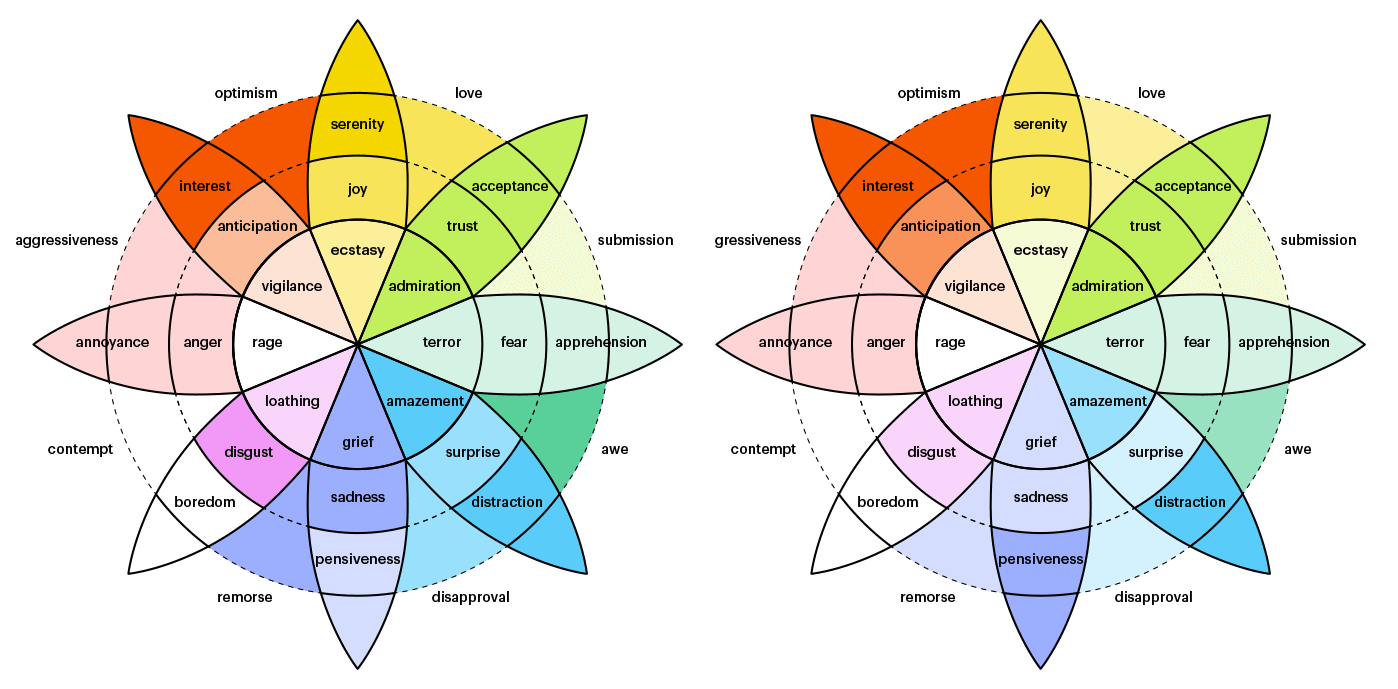
In the image below you can see the intensity and prevalence of Archie’s emotions in monochrome to get a better view of what stands out. As you can see he scores very high in interest and serenity, and apart from distraction doesn’t really have very distinct negative emotions.
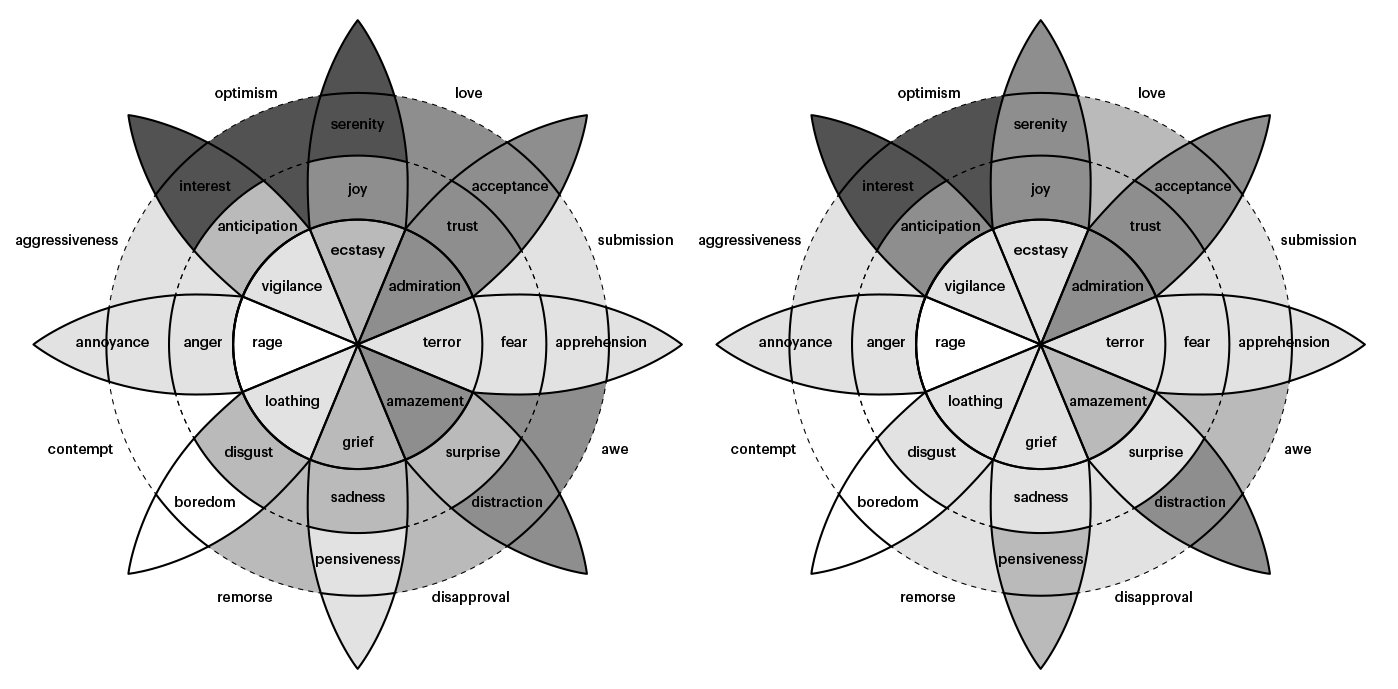
When you combine both intensity and prevalence of my emotions (superimposing both graphs, and setting the transparency of one graph to 50%), you get the following graph:
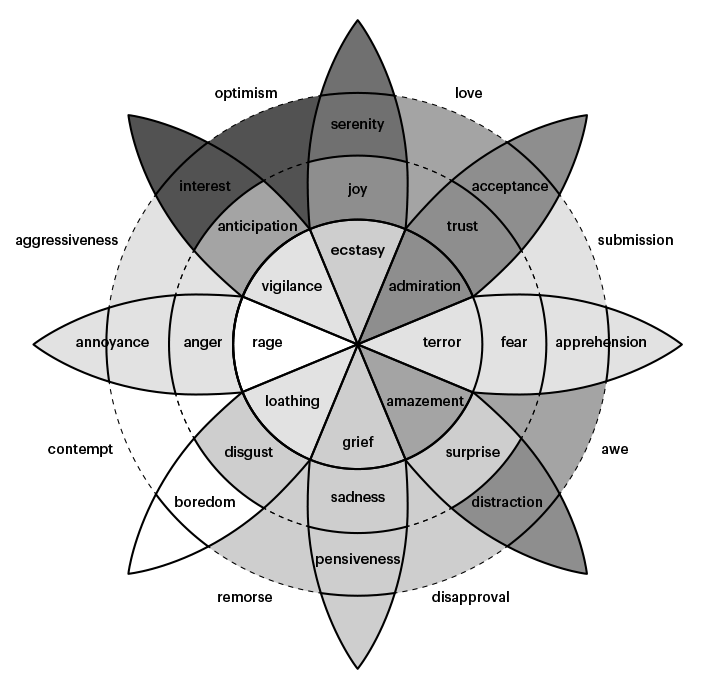
Archie seems to be an overall very positive person, with plenty of acceptance, trust, and admiration of others. It might be the various things that interest and amaze him that distract him.
Anurag Yadav’s emotions
Next another non-autistic person. Anurag’s graphs are quite neatly averaged out. There is, however, a gap in ecstasy. Perhaps the pleasure he derives from life hasn’t reached an ultimate height so far, but he seems to be a very optimistic and pretty well-balanced person when it comes to his emotions.
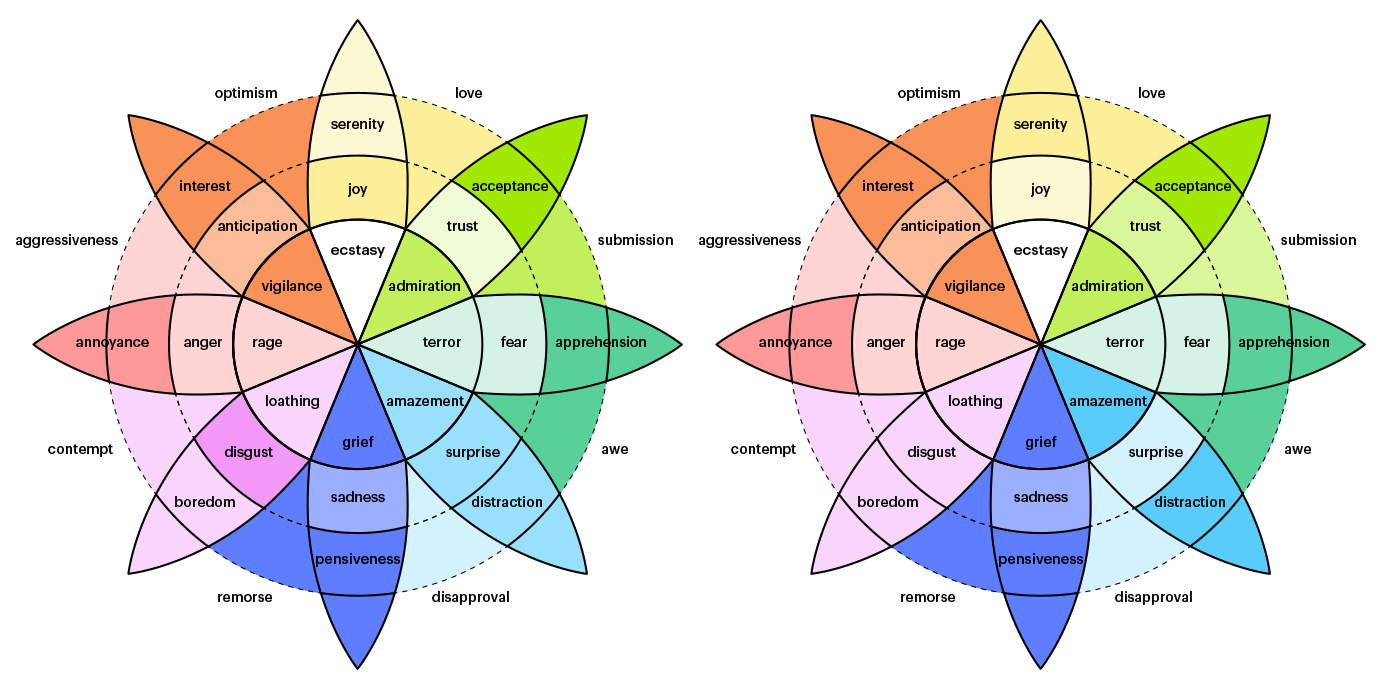
In the graphs below you can see he scores highly on acceptance. Also notable are that he rates himself fairly high on grief, pensiveness, remorse, and apprehension.
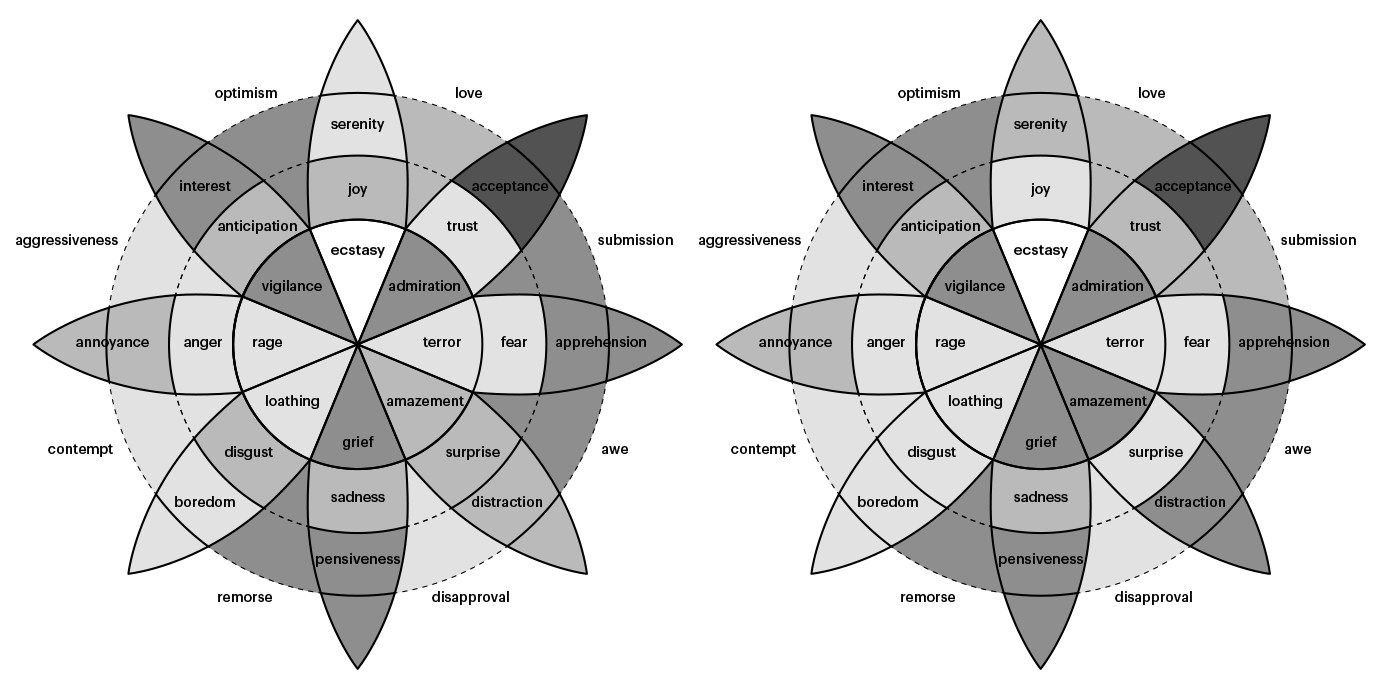
With intensity and prevalence combined, you get the following graph:
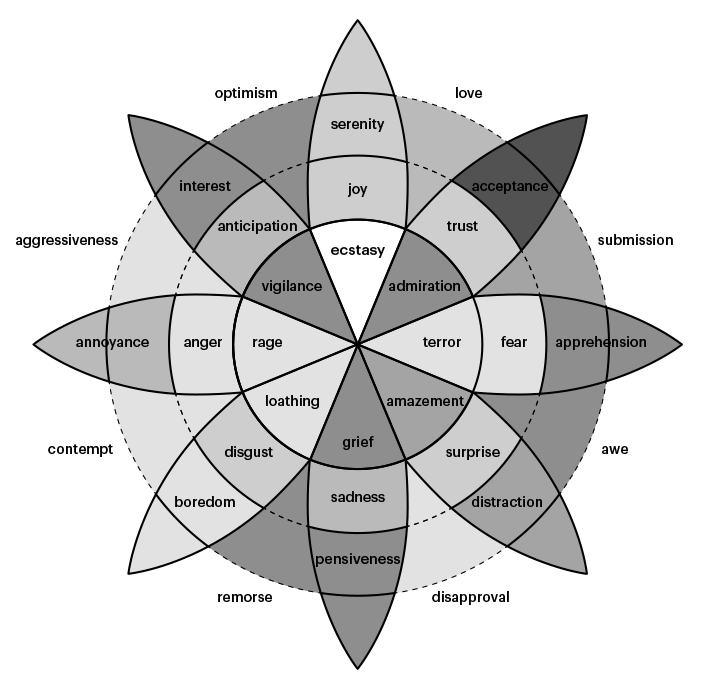
Based on the graph, I would say Anurag is very accepting, interested, optimistic, admiring, and he has experienced awe. He does seem to have sadness in his life, however, and I suspect related to this he is remorseful, vigilant, and lacking in trust.
Dave Consiglio’s emotions
Next we will take a look at Dave’s emotions. He may be on the autistic spectrum, but doesn’t present as distinctly autistic. He might have some autistic traits, but as you will be able to see later, it is interesting how different his graphs are from people that do qualify for an autism diagnosis.

Dave has a very complete emotional profile; unlike the graphs we have seen until now, we see no gaps. In terms of intensity of emotions he rates fairly high on most emotions, but doesn’t experience an intense sadness, terror, fear, apprehension, or aggressiveness. His remorse is also remarkably low, both in intensity and prevalence. But then, he might not have much to be remorseful for. He does experience quite a lot of annoyance, and can engage in deep and melancholic thought.
In terms of positive feelings, Dave spikes when it comes to joy and ecstasy. In terms of prevalence, he experiences quite a lot of optimism, love, joy, and admiration, but he particularly spikes in the diametrical opposites, interest and distraction.
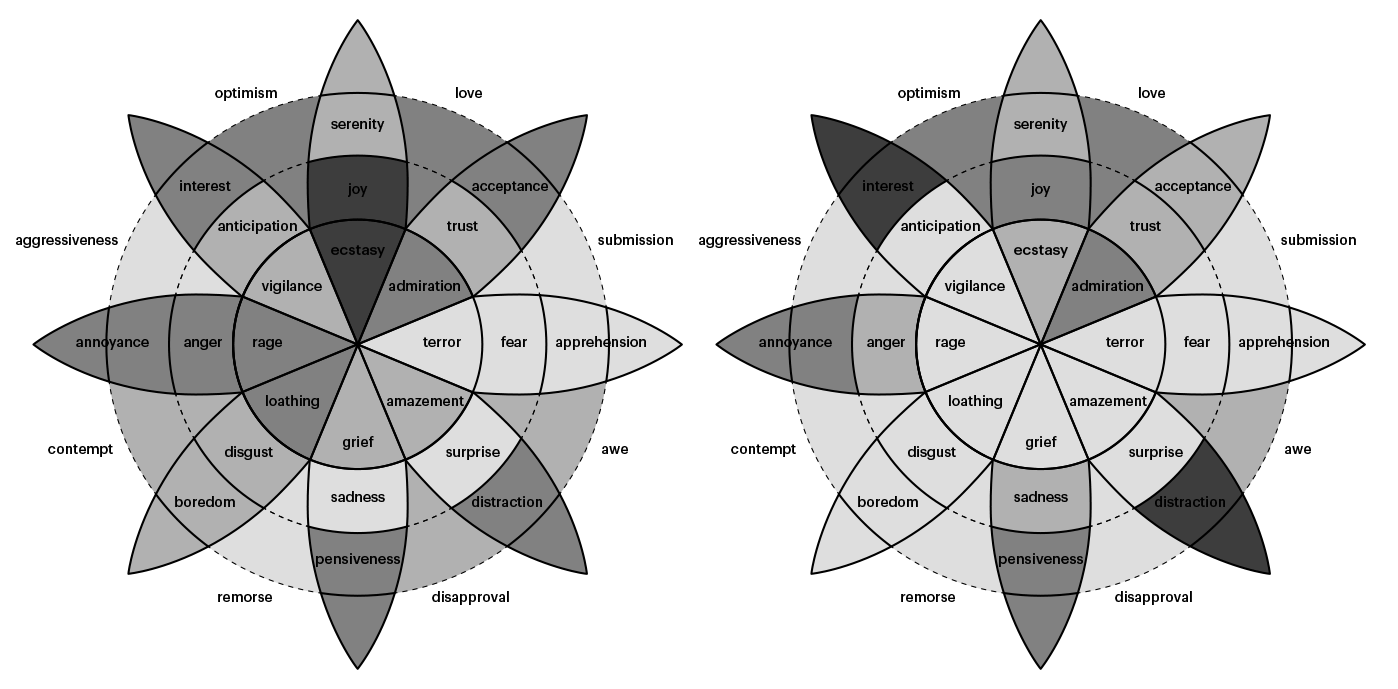
With intensity and prevalence combined, you get the following graph:
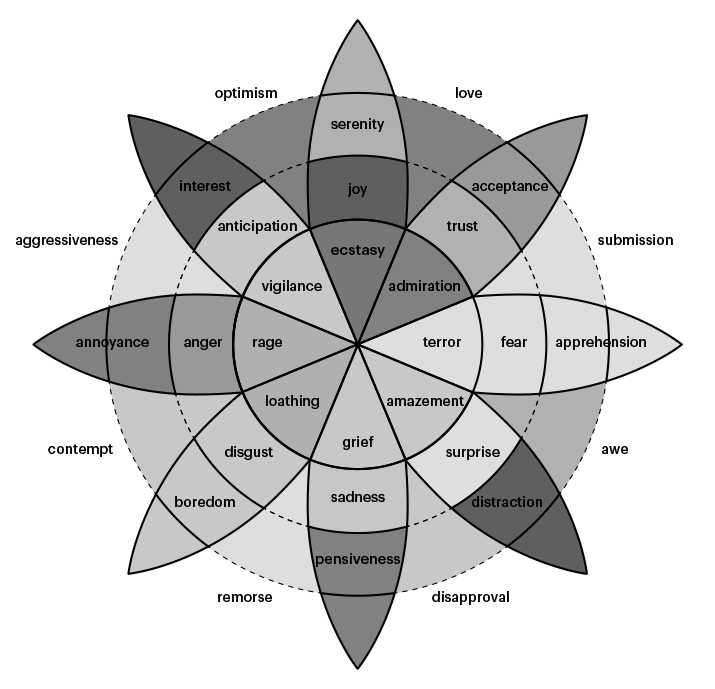
Overall, it looks like Dave is an optimistic, accepting, and loving person. He has a tendency to get annoyed with certain things, but he has a lot of interest and admiration, and experiences plenty of joy and even ecstasy.
My own emotions
This is where things might get interesting. As you can see from the graphs below, some of my emotions can be quite intense, but do not tend to be prevalent. More interesting perhaps is to look at the gaps in the diagram. I have no contempt, no loathing, no terror (although I experienced it when I was young), and as far as I can tell no grief.
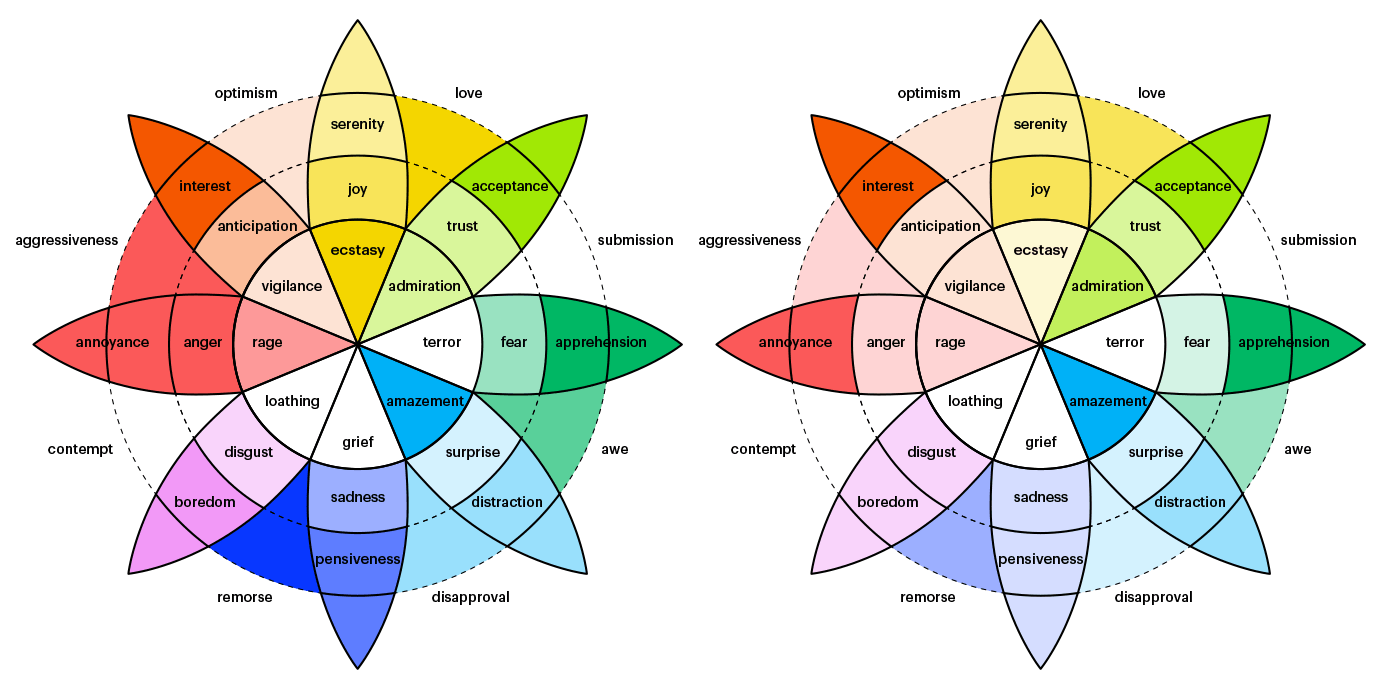
I do get relatively easily annoyed, although I do not tend to show it unless I get triggered. My anger and aggressiveness also relates to my triggers. I am not an inherently angry or aggressive person. I get easily fascinated by things, and so my interest and amazement is high.
In the image below you can see the intensity and prevalence of my emotions in monochrome to get a better view of what stands out. When it comes to prevalence of emotions, most of the emotions that occur often—except for annoyance and remorse—are positive emotions.
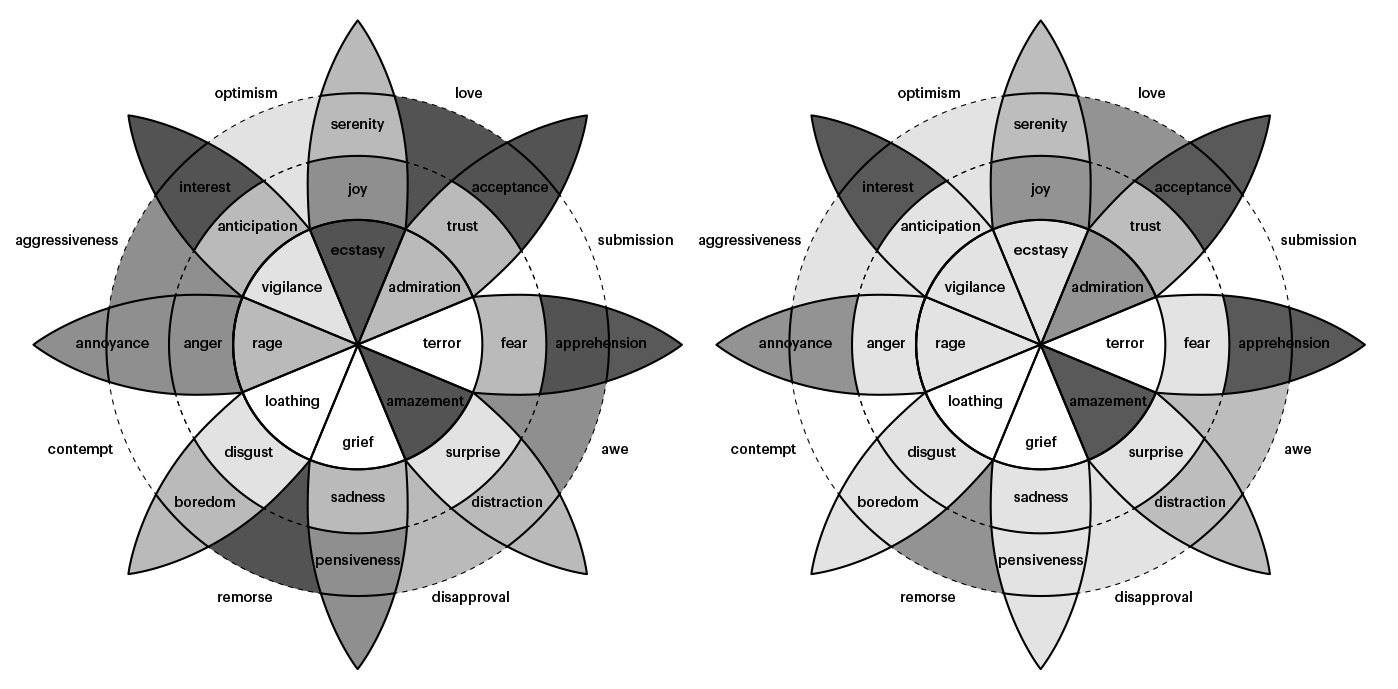
With intensity and prevalence combined, you get the following graph:

As you can see there is some diminished emotionality, and anxiety and triggers, but I am a joyful, loving person with a tremendous amount of fascination for things. It’s interesting to note the peaks and gaps in my graph, however.
Natalie Engelbrecht’s emotions
Now have a look at Natalie’s emotions. She has high-functioning autism and PTSD. A lot of her emotions are a lot more intense than mine, and she doesn’t have any absence of emotions except for boredom. When it comes to prevalence of emotions, she scores high on the positive emotions, as well as fear.
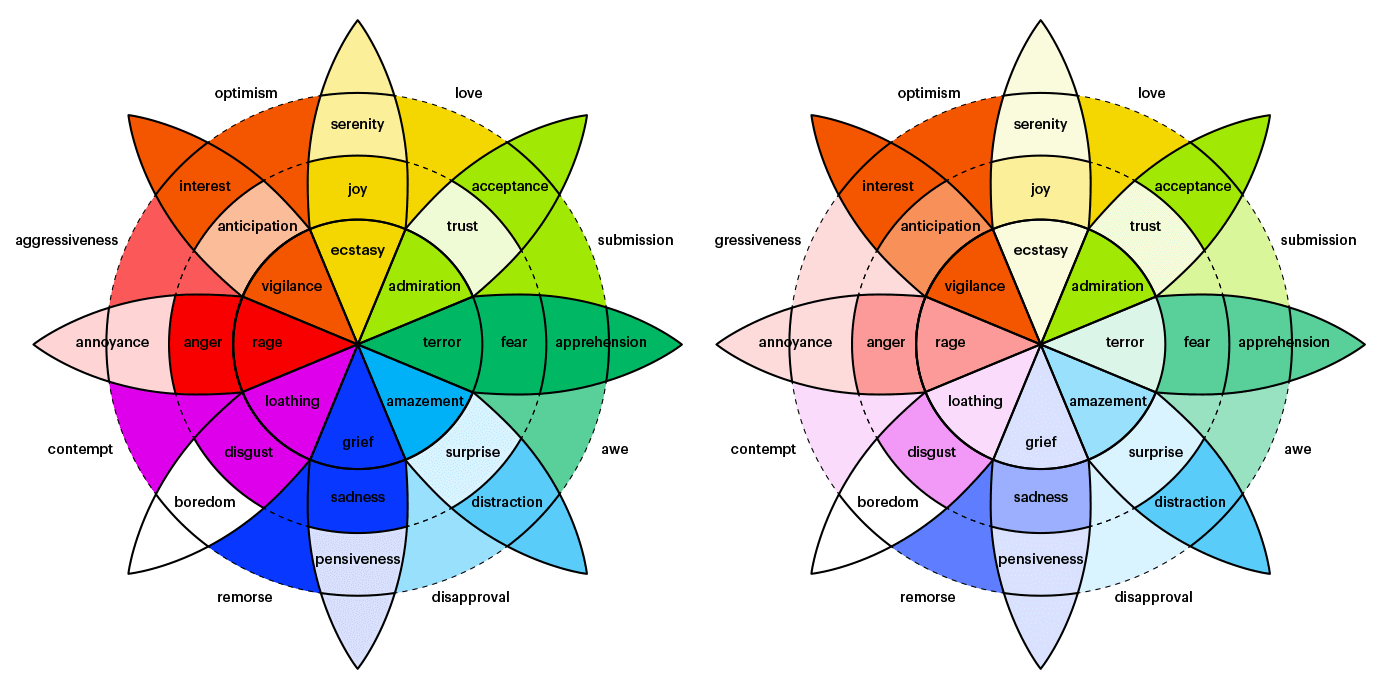
In the monochrome diagrams below, you can see she has a broader range of emotions than I do, and tends to feel them stronger. I should note however that the emotions shown in the inner circles I think are meant to be inherently strong emotions, so it should be no surprise that these emotions are experienced with intensity—albeit not usually with high prevalence.
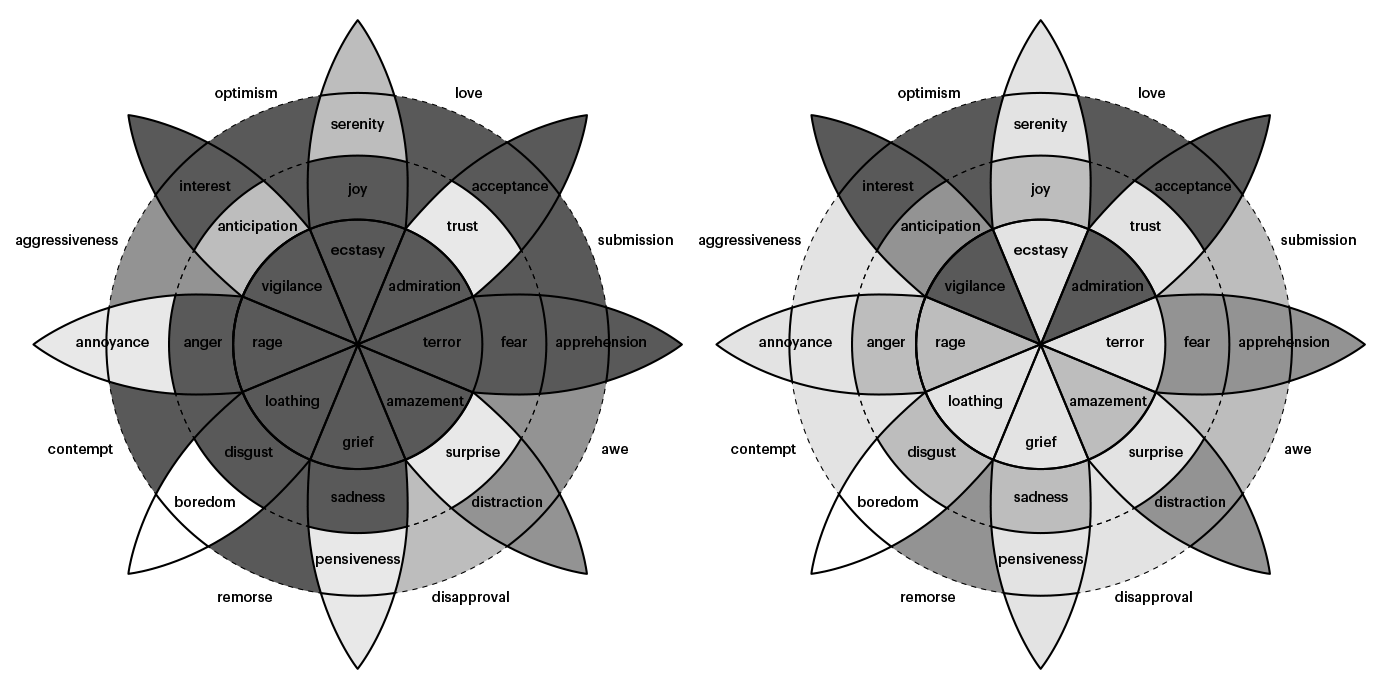
With intensity and prevalence combined, you get the following graph:

As you can see, there are strong emotions which average out when taking prevalence into consideration. Natalie scores very high in interest, acceptance, vigilance, admiration, and to a lesser degree but still distinct the fear-branch. This makes sense given her history and PTSD. Overall the diagram seems to indicate she is an optimistic, loving person with a lot of interest in things, and a high degree of acceptance of others, but she also shows a high degree of caution.
Landon’s emotions
Landon has been diagnosed with ADHD, and has some autistic traits. Looking at his graphs, we can immediately see his emotions are considerable in intensity—both positive and negative ones.
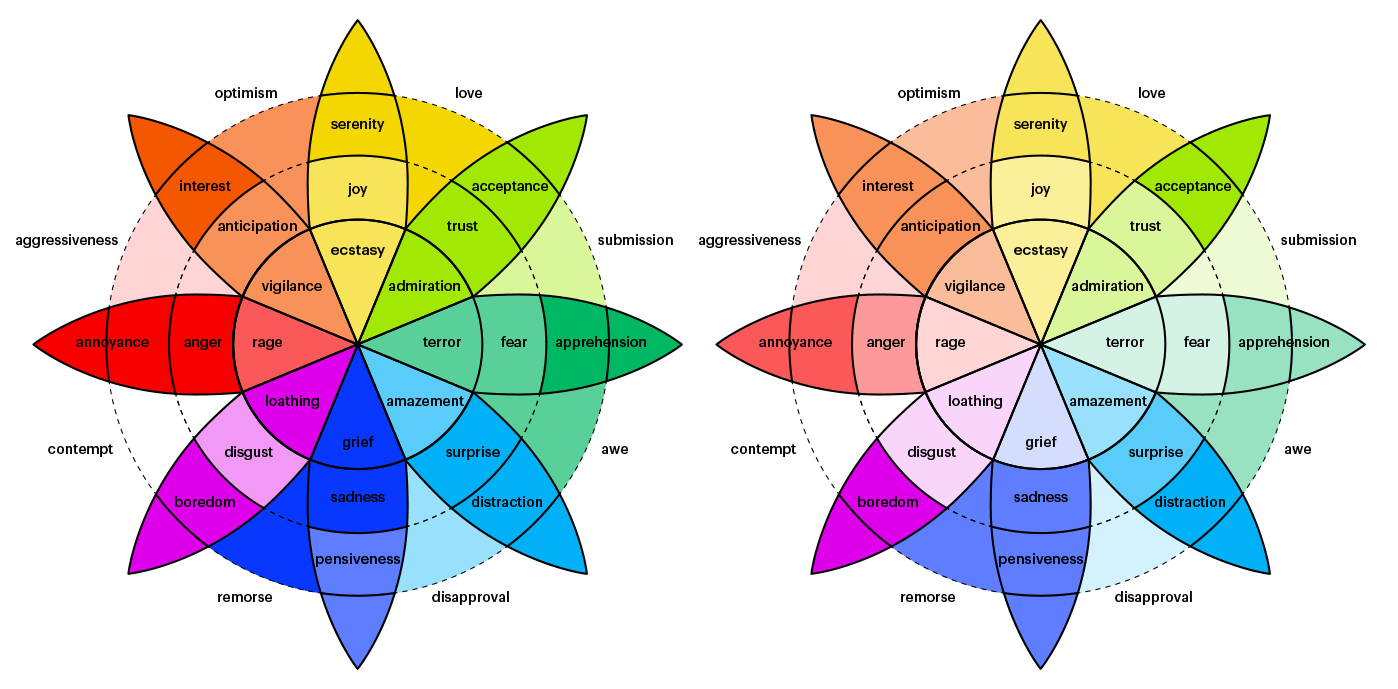
Interesting to note is that he is the only person presented here who scores 4 on the whole admiration–trust–acceptance branch in terms of intensity. He shows distinct peaks in interest, serenity, love, surprise, and the aforementioned green branch, but also in annoyance, rage, loathing, grief, sadness, boredom, apprehension, and distraction. In terms of prevalence of emotions, he rates about average to considerable (2–3), with a greater leaning towards positive emotions, although he does show peaks in boredom and distraction. The latter perhaps particularly on account of his ADHD, but I’ve seen distinct boredom in quite a few autistic people. Whether or not their boredom is to be explained by a comorbidity with ADHD I do not know, but it may also be a function of age; I was a lot more prone to boredom when I was in my teens.
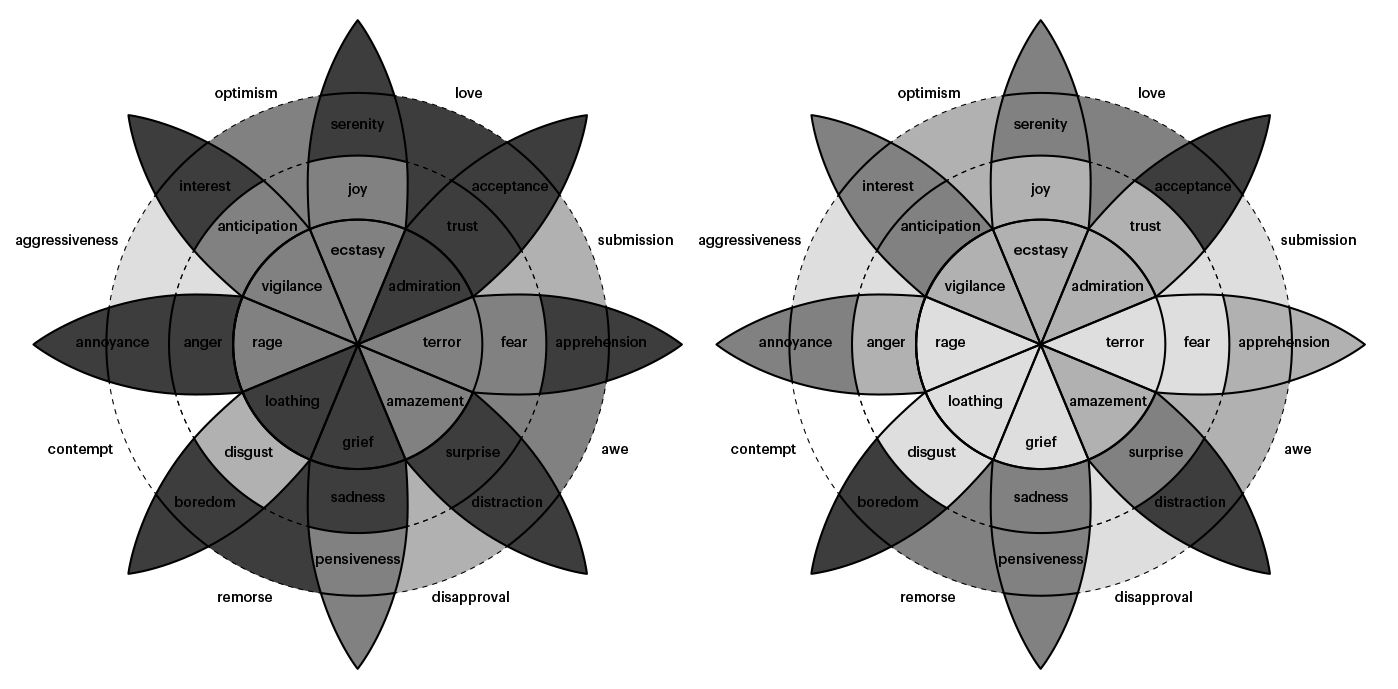
With intensity and prevalence combined, you get the following graph:
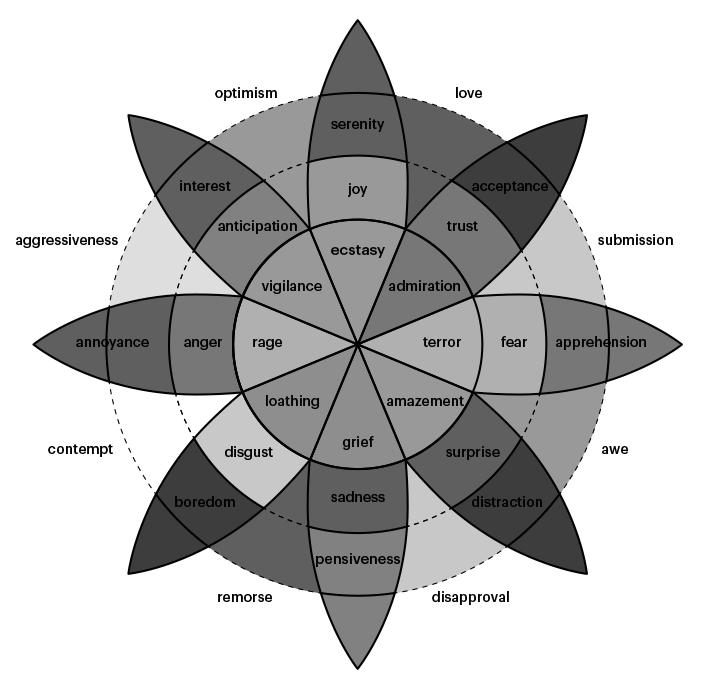
All things considered, Landon seems to be a relatively tranquil person, despite a relatively high prevalence and intensity of emotions. He has his annoyances, but he is a very loving, trusting and admiring person, and in particular very accepting of others. He has a lot of interest in things, but is also prone to boredom and distraction.
Shreeram Murali’s emotions
Next Shreeram, who might be on the autism spectrum as well. Like me, he shows some distinct peaks and gaps in his graphs, although unlike me he is missing none of the intense emotions from the inner circle.
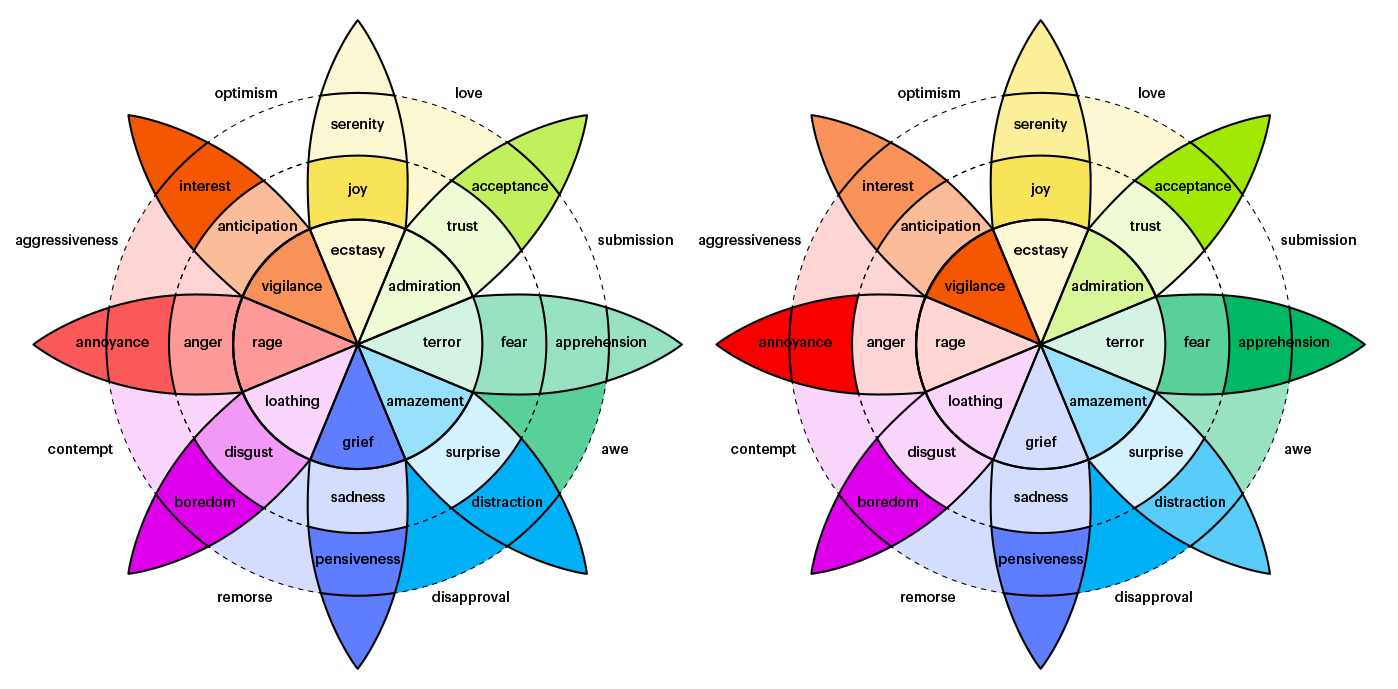
In the graphs below, you can see Shreeram scores very high in interest, boredom, disapproval, and distraction when it comes to intensity. When it comes to prevalence, he also scores high in acceptance on the one hand, and disapproval on the other hand; and he scores high in apprehension, but also in its diametrically opposite annoyance.
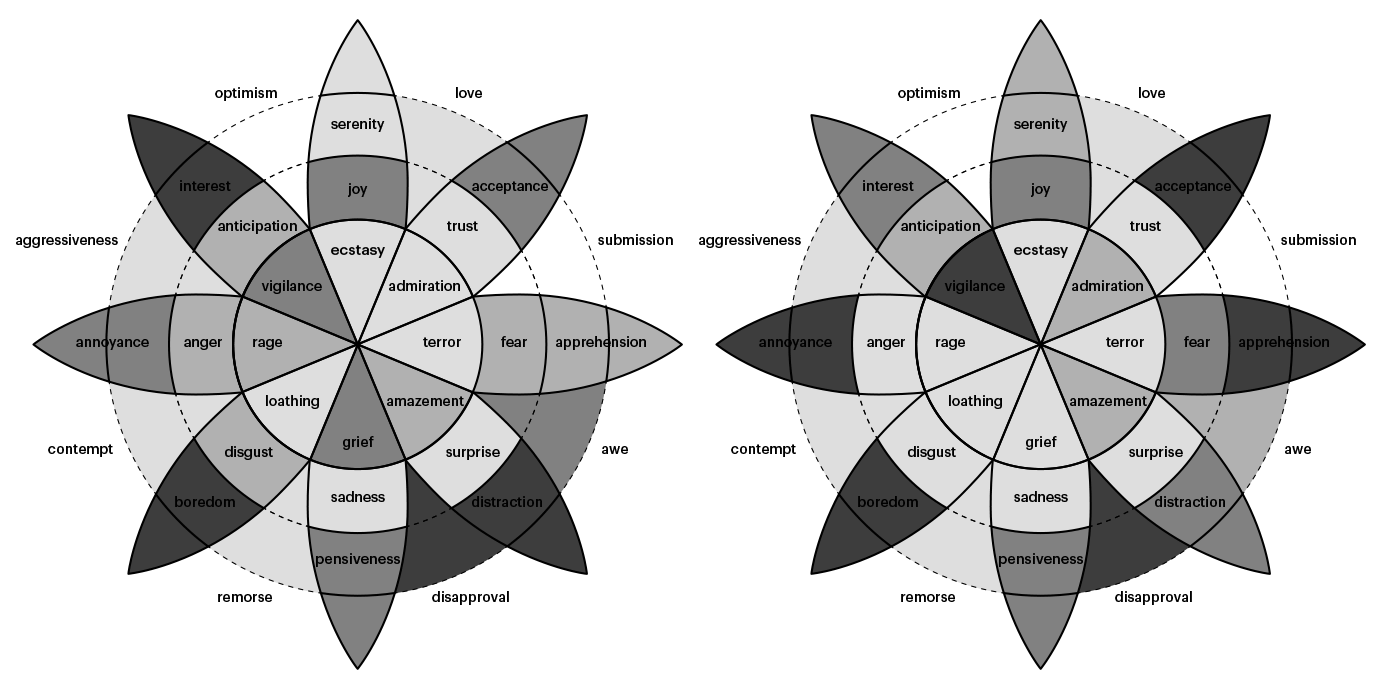
With intensity and prevalence combined, you get the following graph:
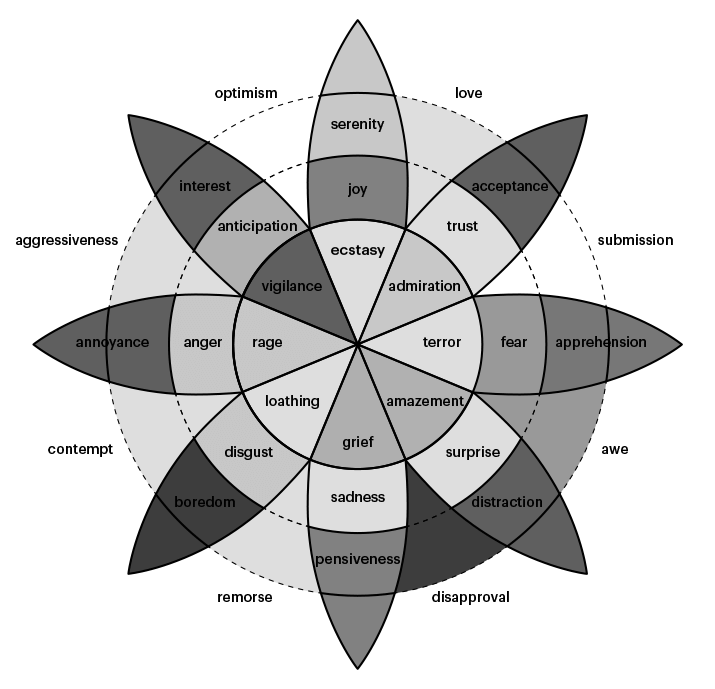
As you can see Shreeram is very interested in things and very accepting of others. Although he has a lot of interest he is also prone to boredom. He also gets fairly easily annoyed and distracted, and based on his high rating on disapproval it seems he has a distinct idea of how things should be. He is very vigilant and distrustful, and he lacks optimism and submission entirely. He can be driven to deep and melancholic thought, but doesn’t seem to be very sad generally. He seems to experience plenty of joy as well.
For more information on Shreeram’s emotions, have a look at his answer to In terms of intensity and prevalence, how would you rate on Plutchik’s wheel of emotions?
Chris M Anderson’s emotions
Next Chris M Anderson, who is autistic as well. He seems to experience the whole ecstasy/joy/serenity branch in full, with prevalent joy and constant serenity. He is very low in fear and apprehension, high in amazement and awe, and gets easily annoyed, bored, and distracted.
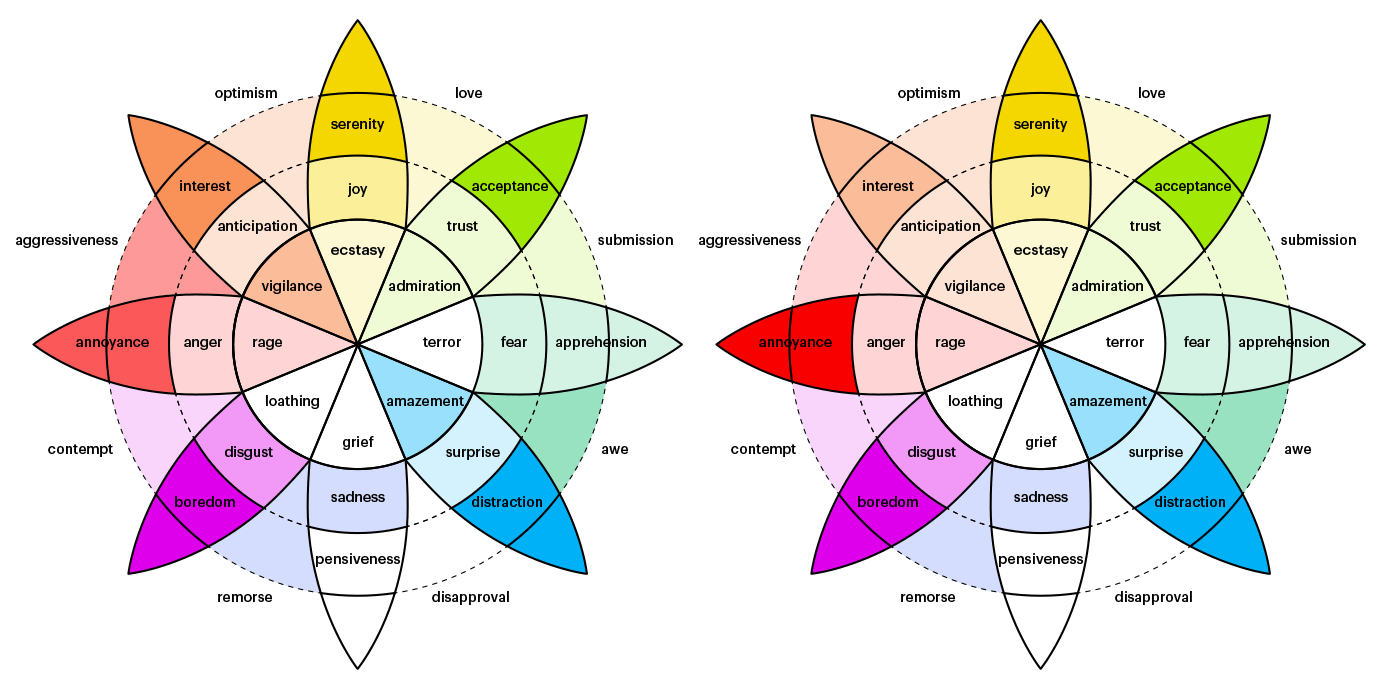
Below you can see his graphs in monochrome. Interesting to note here are strong contrasts between the intensity and prevalence of emotions; they tend to be either very high or very low, with little middle-ground. In fact in many cases I rounded up the scores to 1 (using a scale of 0–4), whereas Chris indicated a rating of 0.5 or less. Not only did I round up, but since 0 indicates a complete absence, anything other than zero is represented as a score of 1 in the graphs.
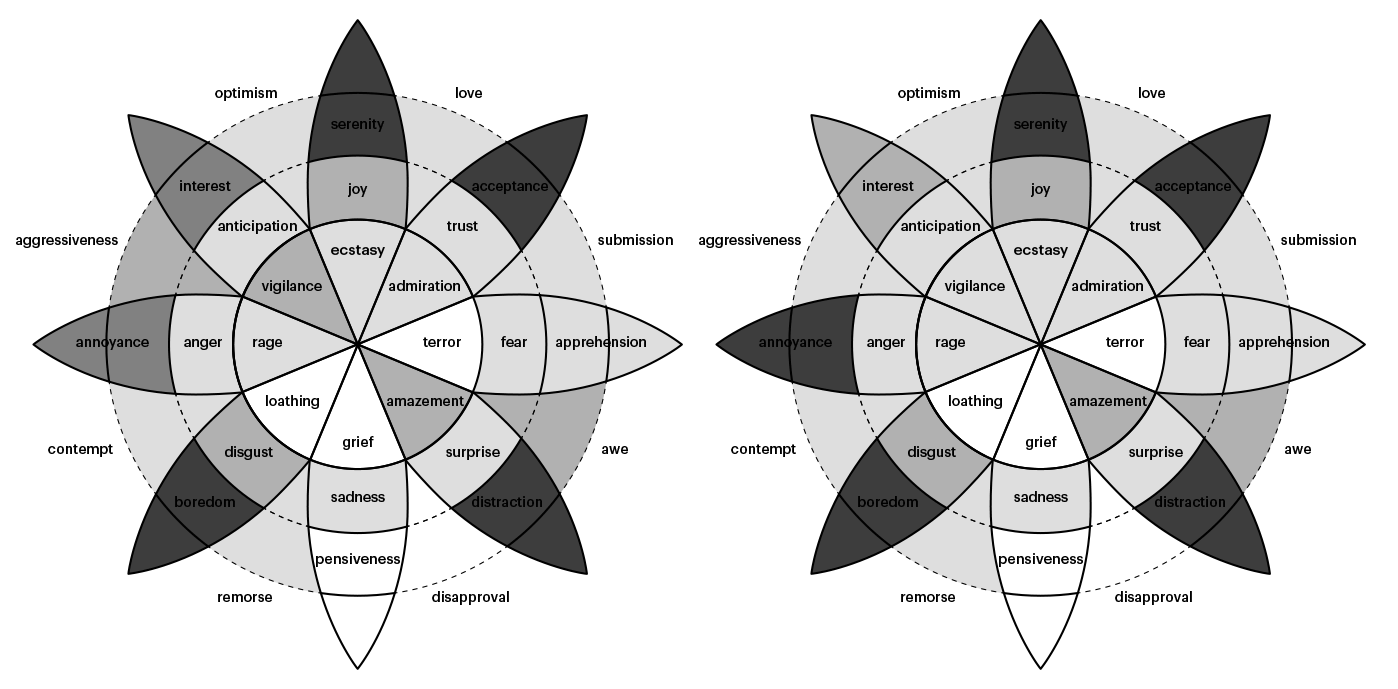
With intensity and prevalence combined, you get the following graph:
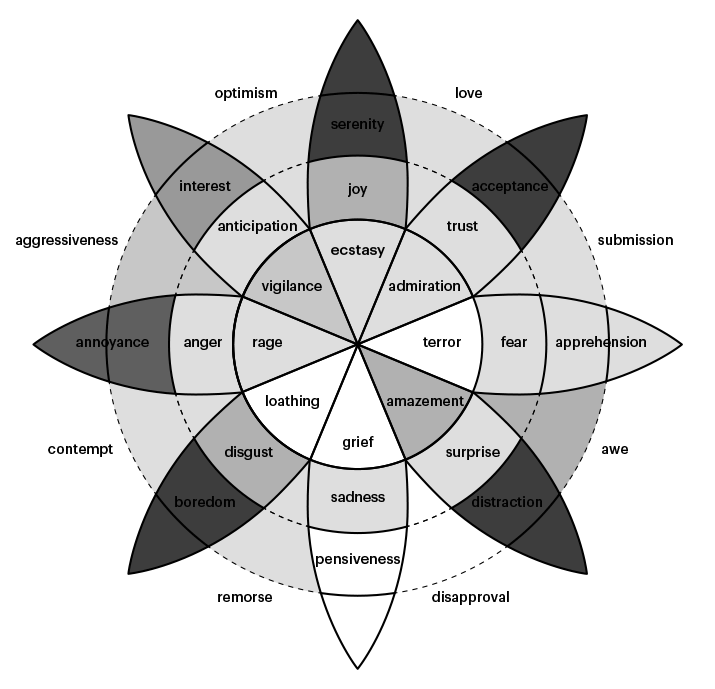
Chris seems to show some diminished emotionality, but experiences a lot of serenity, and is very accepting and non-judgmental. He is also prone to boredom and distraction, however, and tends to get easily annoyed. He and I have that in common, though I think I have mellowed out a bit with age.
Ethan Hillman’s emotions
We just had a look at increased emotionality. All graphs so far have been of autistic people. Ethan is autistic as well, but he also has schizoid features and inattentive ADHD tendencies. As such, you can see a distinct absence of a wide range of emotions.
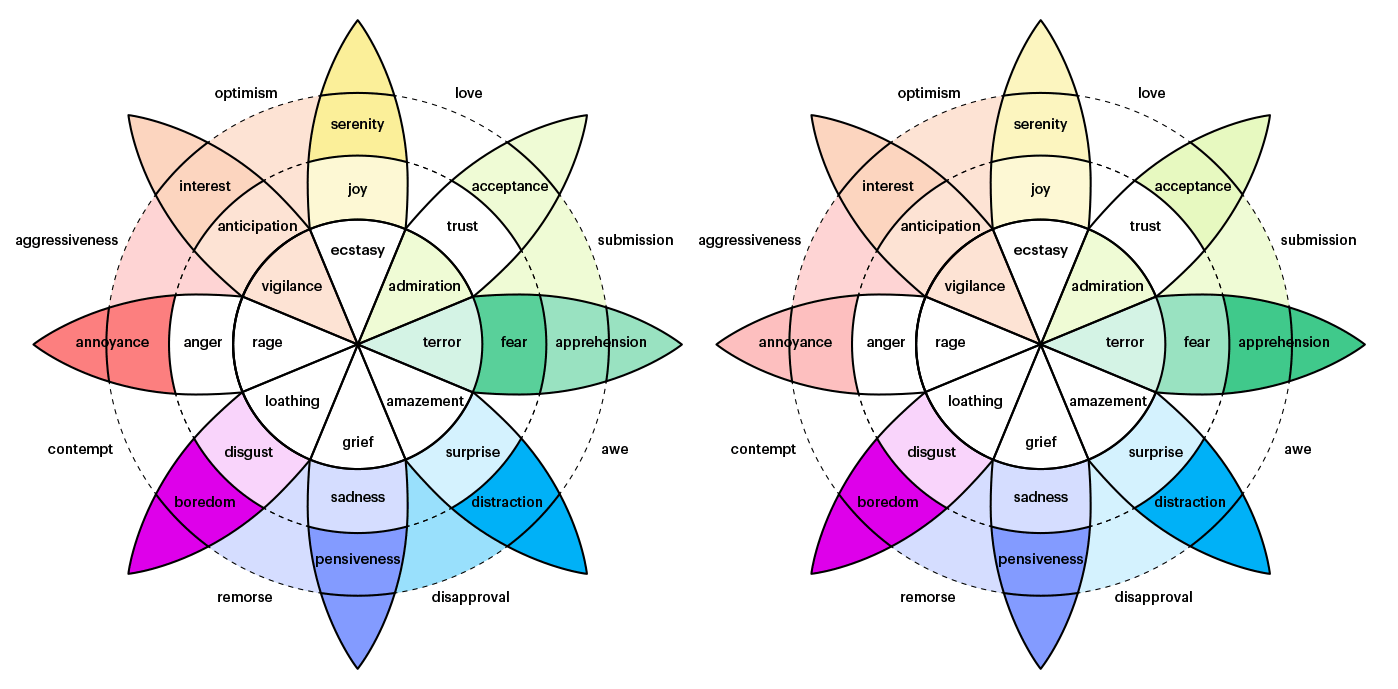
He also experiences some fear and apprehension, but most prevalent and intense are boredom and distraction. Interesting is that he rated himself as experiencing low prevalence and intensity of terror. I never imagined mild terror.

With intensity and prevalence of emotions combined, you get the following graph:
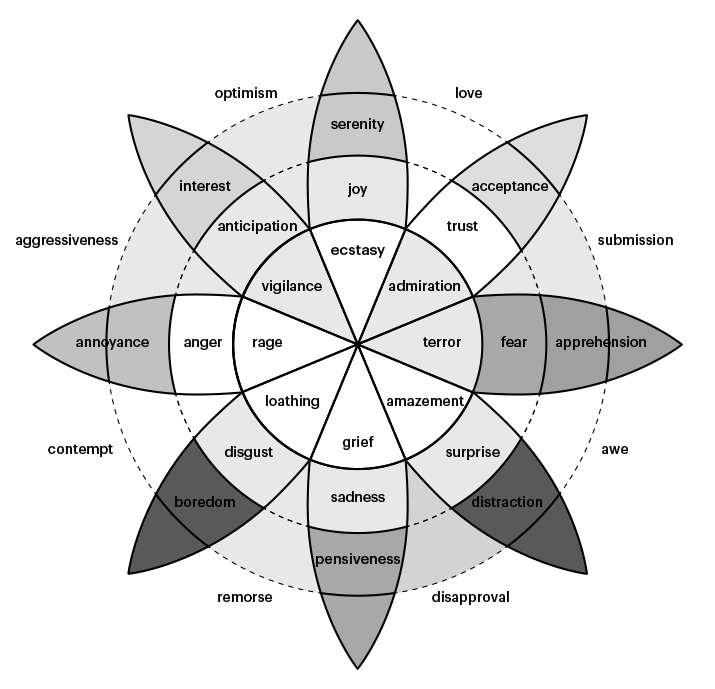
Ethan shows very distinct lack of emotionality. He doesn’t score high on any of the positive emotions, but he doesn’t seem to experience many of the negative ones either, except for fear and apprehension (prone to anxiety), and more distinctly boredom and distraction.
I think what we see in the graphs can be understood primarily within the context of schizoid traits, but I could be wrong. It could also be the case that some of the emotions are there, but due to alexithymia are not experienced consciously.
For more information on Ethan’s emotions, have a look at:
Ethan Hillman’s answer to:‘As an autistic, how would you say you rateon Plutchik’s wheel of emotions in terms ofintensity and prevalence?’
Shay Posey’s emotions
Now we get to have a look at a complex cluster B personality. What kind of cluster B personality I am unsure of, but Shay has indicated she might have narcissistic personality disorder and histrionic personality disorder with a psychopathic framework—high in factor 1 traits. It is interesting how she compares with other cluster B personalities presented in this post.

As you can see there is a lack of rage, loathing, disgust, contempt, and remorse on the one hand, but also a lack of joy, trust, and submission. Some of her emotions can be quite intense, but do not tend to be prevalent, and she reports that her emotions tend to be very short-lived, with some lasting but a second. Terror and fear only emerge in her sleep, and she reports experiencing them cognitively rather than producing stress and anxiety.

With intensity and prevalence of emotions combined, you get the following graph:
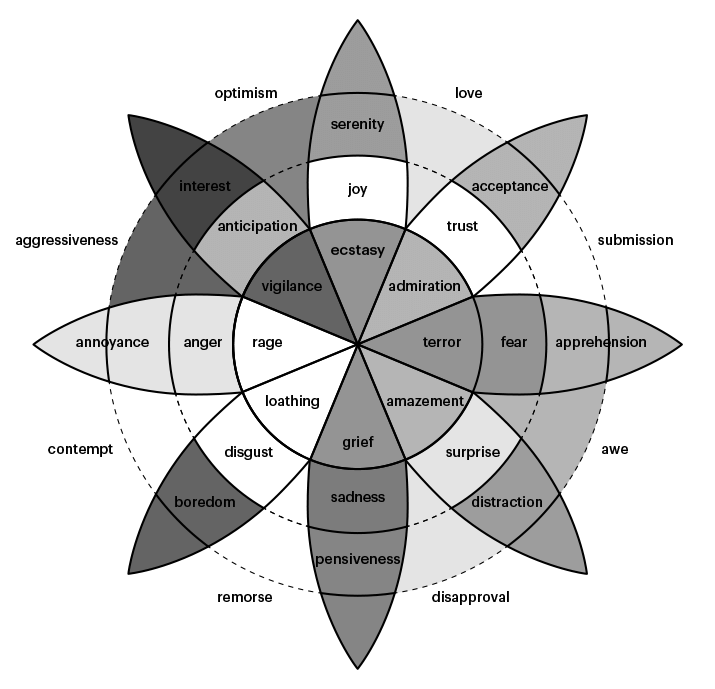
As you can see there is a distinct lack of emotionality in some categories, whereas there is relatively high emotionality in others. No rage, contempt, or loathing, but plenty of aggressiveness. Most significant are her interest, vigilance, aggressiveness, and boredom.
David Horst’s emotions
Next a primary psychopath with ADHD and schizoid features. As you can see from the graphs below, he has some fairly pronounced emotions, but also very distinct gaps in his emotional profile.
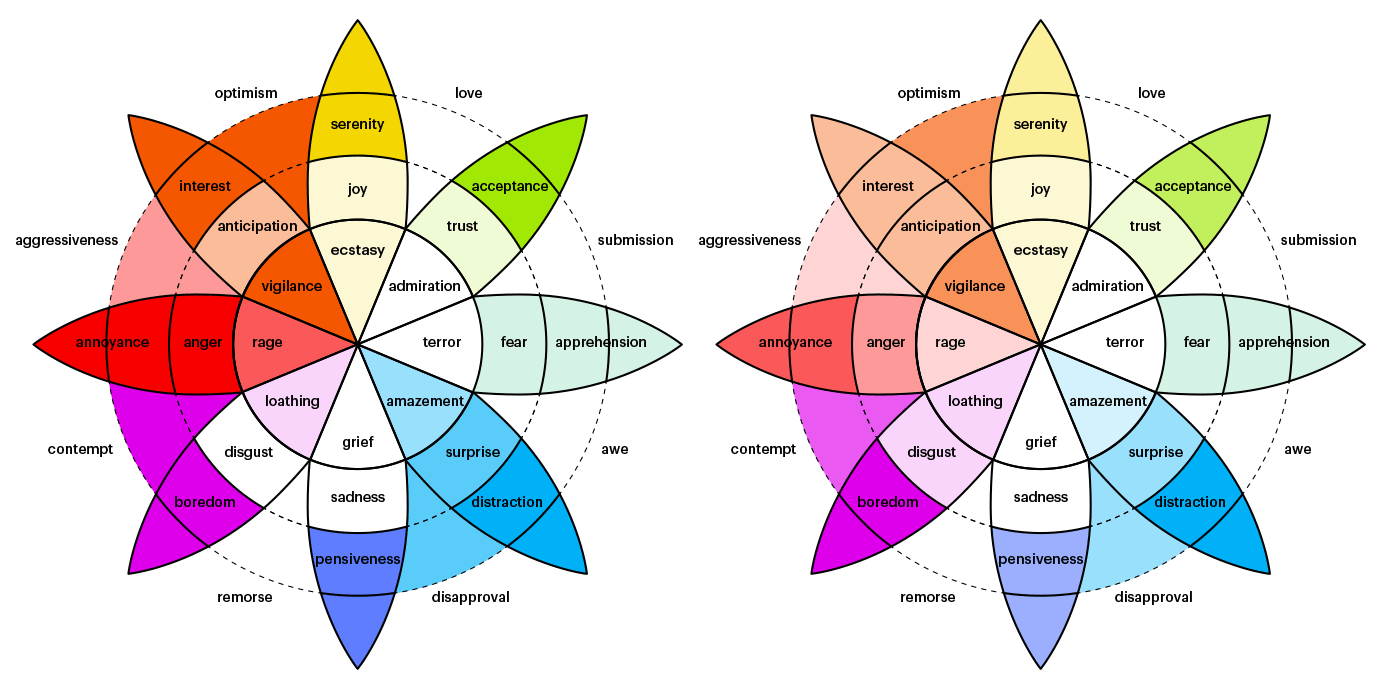
As you can see in the graphs below, in terms of intensity he scores high in anger, annoyance and contempt, but not so much in aggressiveness. He is highly interested, optimistic, content, and accepting of others. With prevalence taken into consideration, what mostly stands out are his high levels of boredom and distraction. The boredom is likely on account of his psychopathy, while his distraction is likely on account of his ADHD. He has low levels of trait anxiety.

With intensity and prevalence of emotions combined, you get the following graph:
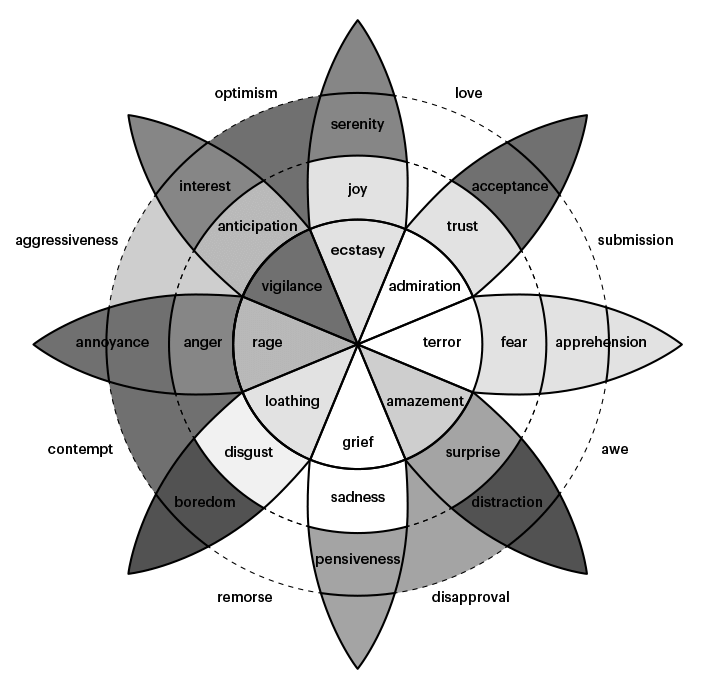
Besides boredom, distraction, and acceptance, we see a distinct absence of love, submission, awe, remorse, admiration, terror, grief, and sadness. David is vigilant and distrustful, and prone to annoyance, anger, and contempt, but he is also very optimistic and content (serenity). His joy and ecstasy is diminished, but nor does he experience distinct fear or apprehension.
Jimmy Cook’s emotions
Lastly, we will have a look at the emotions of a primary psychopath. Like David, Jimmy shows an asymmetrical profile, with some intense emotions on the one hand, but also a lot of gaps in his emotional profile, and a distinctly diminished emotionality.
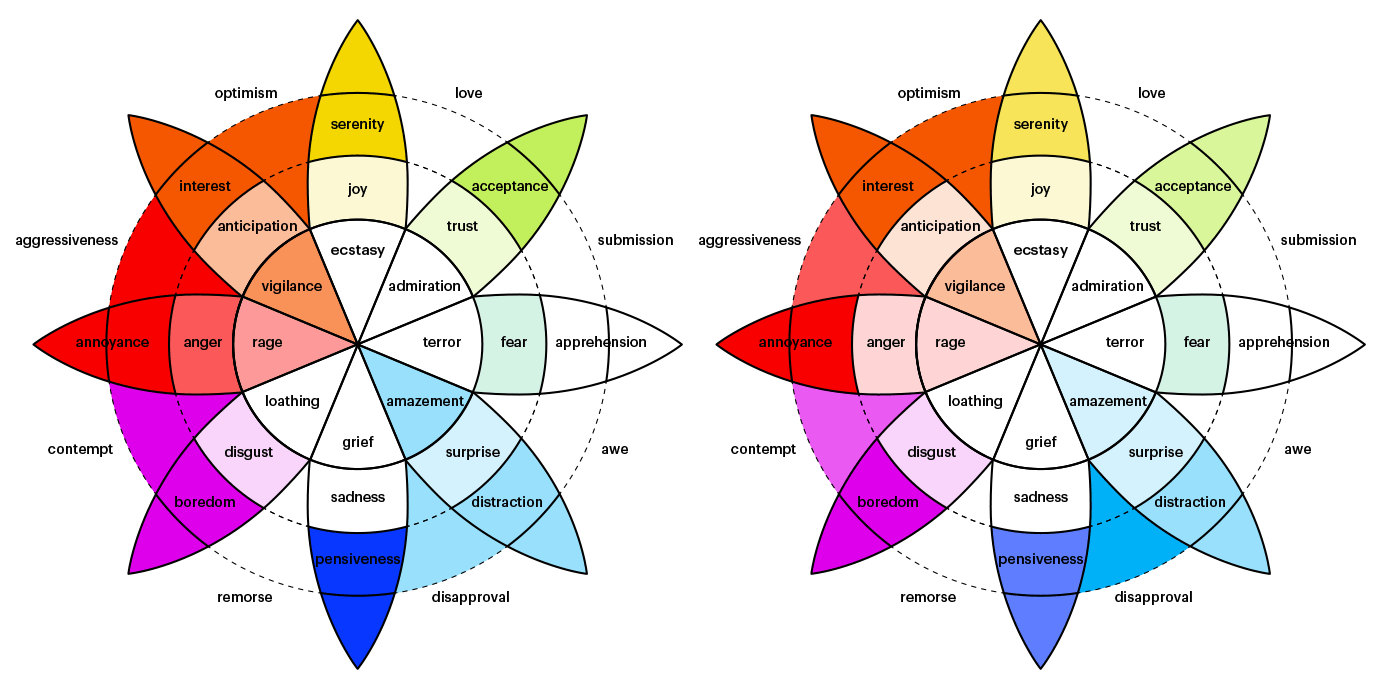
As you can see, Jimmy is very prone to strong feelings of annoyance, and he is fairly aggressive and contemptuous. At the same time, he shows a lot of serenity and optimism. He is completely lacking ecstasy, and experiences a diminished sense of joy at medium prevalence. Like David, Jimmy is quite vigilant, and tends to be very distrustful of people.
On the upside, he experiences no grief or sadness, no remorse, no terror, no apprehension, and only a rudimentary sense of fear. He is high in interest, and very prone to boredom. In fact, he rated his prevalence of boredom at over 9,000. Unfortunately my scale of 4 doesn’t quite capture that.

With intensity and prevalence of emotions combined, you get the following graph:
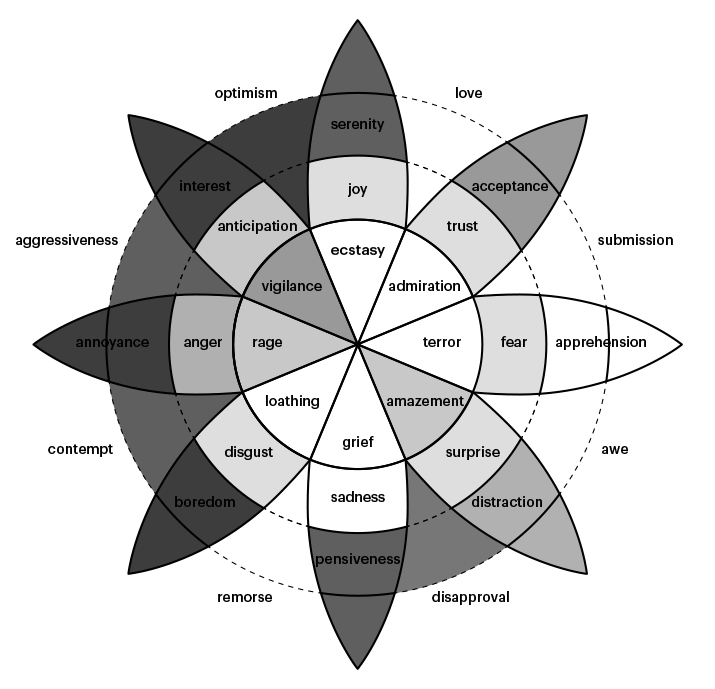
Overall, Jimmy seems to be quite a content and optimistic person with a lot of interest in the world, albeit he is prone to annoyance and rates high on aggressiveness. He is very even-tempered, however, as is evident by his low levels of anger and rage, but his high level of aggressiveness indicates he is not a person to be messed with. Interestingly, he does rate quite high on pensiveness.
Observations
An interesting observation is that those with personality- or neurodevelopmental disorders (or neurovariants, as some prefer to consider them) tend to show some interesting asymmetries in their emotional profiles; often there are distinct gaps and diminished emotionality, but sometimes one can see quite intense emotions, some of which may be linked to triggers.
While I figured it would be the psychopaths who would show the most distinctly diminished emotionality, perhaps schizoid traits and/or high levels of alexithymia are more prevalent factors when it comes to emotional profiles showing diminished emotions or absence of emotions.
There are two things to note here, however:
- Cognitive alexithymia makes it difficult for the individual to identify or rate certain emotions. So rather than an absence of emotions, gaps in the emotional profile can indicate deficits in identifying emotions.
- The diagrams show a subjective rating of emotions. So for example, while the psychopaths rated the intensity of emotions according to their own baseline of emotions, it is probably the case that objectively the intensity of all or most of their emotions is lower than in non-psychopaths—even if they may have rated the intensity of their emotions the same or higher than non-psychopaths.
I thought it was interesting that, despite having looked at quite a few emotional profiles and having observed quite a few gaps, none of the people rated here showed a complete absence of an entire branch.
Below is an overview of all the graphs presented in this post.
Neurotypicals

Autism & ADHD
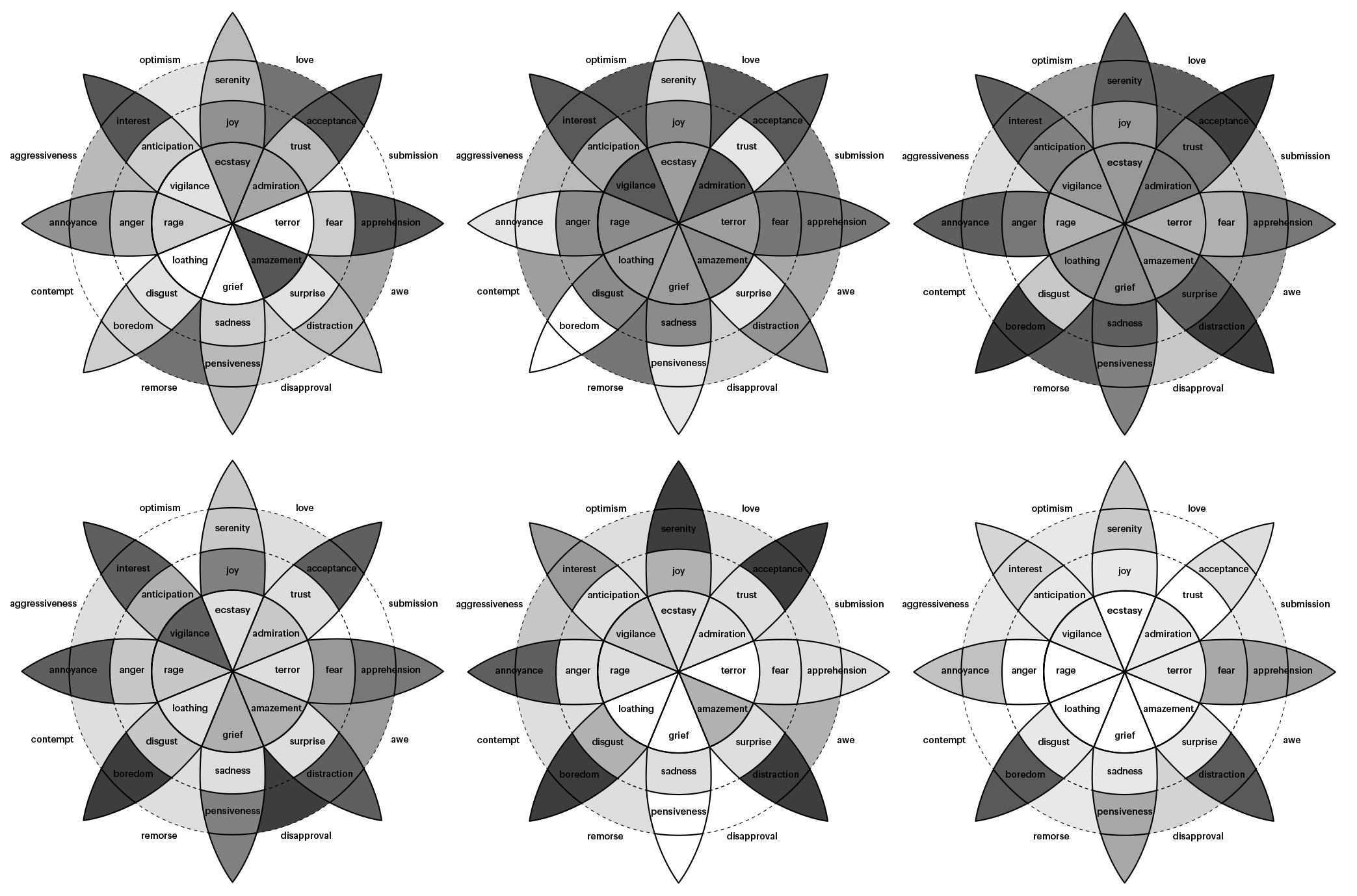
Cluster B personalities

Images unless otherwise specified: copyright © 2018 Martin Silvertant (EmbraceASD.com). All rights reserved.
Comments
Let us know what you think!